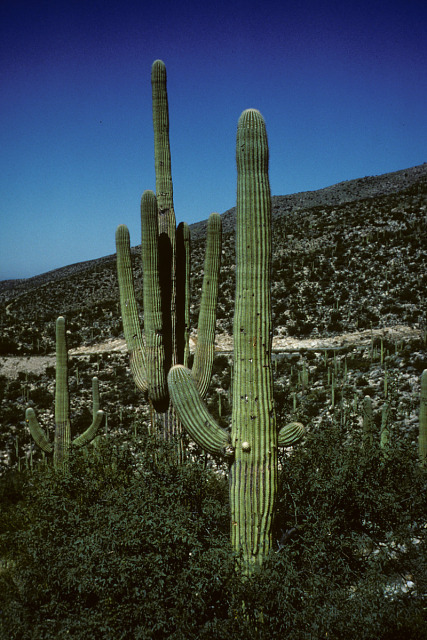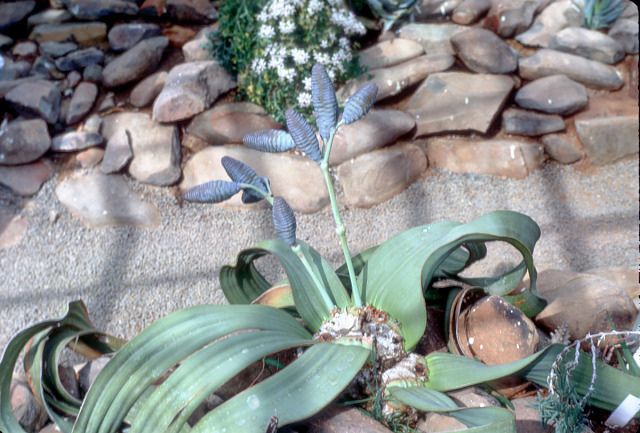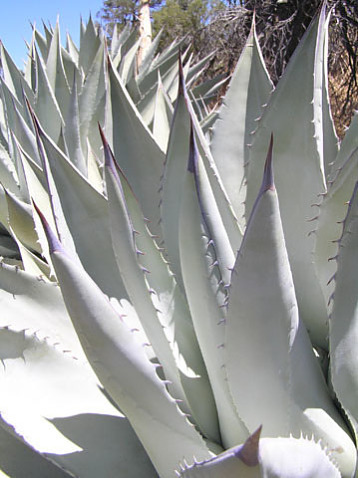Arid House
Welcome to the Arid House!
"Arid" climates are very dry, and are often very hot during the day and cold at night. Plants that grow in arid climates are experts at surviving droughts, which are long periods without rain. While plants in this house come from all over the world, one thing they have in common is that they have adapted to their climate by developing features to help them store water. Look for thick skin or fleshy leaves that keep in water. (Source)
While the plants in this house may share some features, you'll find plants of all shapes and sizes!
Many of the plants in this house are cactuses, which have spines instead of traditional leaves. Start with the Giant Cactus to the right to begin exploring the plants in this house.
Click Next to do some plant research of your own before you leave the Conservatory.





